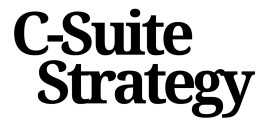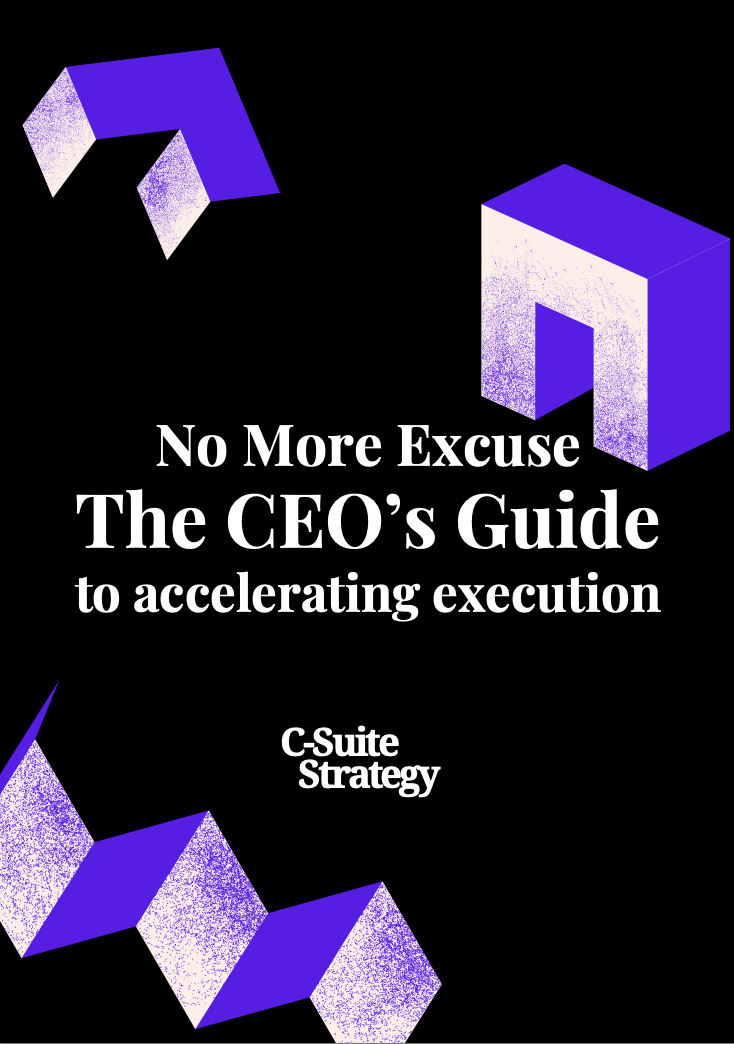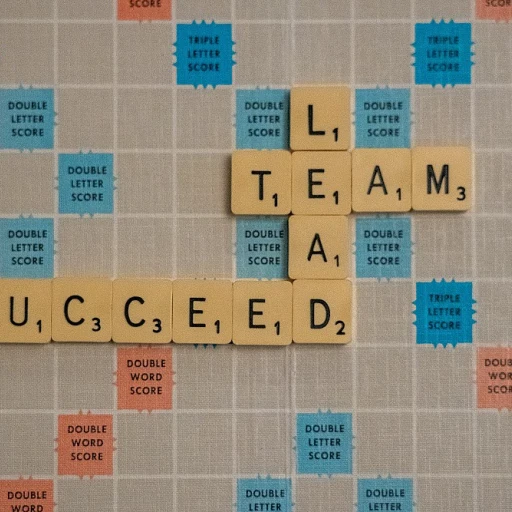
Understanding the Essence of a Performance Culture
The Core of a Performance-Driven Culture
Understanding what truly defines a high-performance culture within the C-suite is paramount for any organization aspiring to achieve excellence. At its heart, a performance culture is a symbiotic blend of employee engagement, organizational commitment, and leadership vision. It's about setting clear, aligned goals and fostering an environment where employees feel valued and motivated to meet these targets. Every company aims to cultivate a work atmosphere that not only inspires but also drives results. In doing so, management should ensure that employees are aware of the company values that shape their daily work life. Aligning these values with individual roles helps bridge the gap between employee performance and organizational objectives. A robust performance management system is also crucial. It serves as the backbone that supports the continuous learning and development of employees. This system aids in defining roles, responsibilities, and expectations, consequently empowering leaders and their teams to achieve a high-performing status. Furthermore, a thriving performance culture necessitates an enduring commitment to improvement and adaptation. As market dynamics shift, business strategies must evolve. Encouraging employees to take calculated risks and embrace innovation becomes essential for staying competitive. You can explore more about fostering a culture of innovation by visiting this strategic imperative for leaders. Leadership plays a pivotal role in cultivating this culture. It's about embodying the purpose and direction of the company and instilling these values in every action. By fostering a culture where performance reviews are not just evaluations but opportunities for growth and dialogue, organizations will nurture high-performing teams. In essence, a performance-driven organizational culture is not only about striving for short-term gains but also building sustainable, long-term success. By embedding these characteristics, companies can ensure that their employees contribute positively to the overall business objectives.Aligning Leadership Goals with Organizational Objectives
Synchronization of Leadership and Business Objectives
Aligning leadership goals with organizational objectives is pivotal in crafting a high-performance culture. When leaders set a clear direction that reflects the company's mission and values, it fosters a sense of purpose among employees. This alignment is not just about matching strategic goals with business targets but connecting people with the broader purpose of the organization.
Leaders should ensure that their goals resonate with the company's overarching vision. This entails a deep understanding of a culture of innovation within the workplace, encouraging an environment where innovation and creativity thrive.
- Establish robust communication channels that allow leadership to convey organizational goals effectively.
- Develop a feedback mechanism that aids in the coordination and collaboration between different management levels.
- Engage in continuous dialogue to keep leadership goals dynamic, relevant, and adaptive to market changes.
Moreover, intertwining leadership goals with high-performance management systems nurtures not only employee engagement but also influences employee performance positively. This pursuit creates a chain reaction where the enthusiasm of leaders permeates through the organization, inspiring teams to perform at their best.
The importance of goal alignment is evident in how it solidifies the organizational culture, ensuring that every team member is working towards a shared vision. It fosters a cohesive and engaged workforce, which is fundamental in achieving long-term business success.
Fostering Open Communication and Feedback
Building Bridges Through Open Dialogue
In any high-performing organization, fostering open communication and feedback is crucial. It is the backbone of a thriving performance culture where employees feel valued and heard. When leaders prioritize transparency, they pave the way for a culture where ideas can flow freely, and innovation can flourish. This approach not only aligns with the organizational goals but also enhances employee engagement, making them feel integral to the company's success.
Open communication starts with leadership. Leaders must model the behavior they wish to see in their teams. By actively listening and providing constructive feedback, they set a standard for how communication should occur across the organization. This practice helps in breaking down silos and encourages a more collaborative work environment.
Feedback as a Tool for Growth
Feedback should be seen as a tool for growth rather than a mechanism for criticism. When implemented effectively, it can significantly boost employee performance and morale. Regular performance reviews, when conducted with a focus on development, can help employees understand their strengths and areas for improvement. This not only aids in personal growth but also aligns individual goals with the broader organizational objectives.
Moreover, creating a feedback-rich environment requires a robust management system that supports continuous learning and development. By integrating feedback into the daily workflow, organizations can ensure that employees are constantly evolving and adapting to new challenges.
Encouraging a Culture of Trust
Trust is a fundamental characteristic of high-performing cultures. When employees trust their leaders and feel trusted in return, they are more likely to take risks and innovate. This trust is built through consistent and open communication, where leaders are transparent about company values and long-term goals. By fostering a culture where employees feel safe to express their ideas and concerns, organizations can unlock the full potential of their teams.
Ultimately, the goal is to create a culture where communication is not just encouraged but is an integral part of the organizational fabric. This will not only help in achieving high performance but also in cultivating a workplace where employees are motivated to contribute to the company's success.
Implementing Metrics and Accountability
Utilizing Metrics for Enhanced Accountability
In an era where performance is at the heart of organizational success, the integration of metrics and accountability has become an imperative. This not only involves setting clear benchmarks but also ensuring they are aligned with the overarching organizational goals. Leaders play a critical role in weaving performance metrics into the fabric of company culture. A well-structured performance management system can significantly impact employee engagement and the overall culture of the organization. The characteristics of high-performing teams unveil the importance of consistent performance monitoring. By establishing key performance indicators (KPIs), organizations can align individual objectives with strategic goals. This alignment helps to fortify a performance culture where each employee feels their contributions are valued and purposeful.- Clarity in Expectations: Clearly outlined performance reviews allow employees to understand their roles within the bigger picture. When employees have a transparent view of expectations, they are more likely to exhibit high performance, contributing to a thriving work environment.
- Real-time Feedback: Encourage real-time feedback instead of limiting evaluations to annual assessments. This creates an environment where continuous learning is embraced, and employee performance can be adjusted promptly.
- Tailored Metrics: While it is crucial to have company-wide metrics, consider personalized metrics for different departments. This acknowledges the unique challenges and objectives each unit faces, reinforcing a culture of high performance.
Encouraging Innovation and Risk-Taking
Innovative Thinking and Risk Appetite
Cultivating a high-performance culture requires embracing innovation and encouraging calculated risk-taking. In today's competitive environment, maintaining a status quo could stifle progress and dampen a company’s ability to meet dynamic market demands. A culture that supports innovation helps in fostering an environment where employees feel empowered to experiment and pursue new ideas. Leaders play a crucial role in setting the tone for innovation by nurturing a creative work environment. By aligning leadership goals with the organization's broader objectives, leaders can actively promote a culture of curiosity and forward-thinking. Here are a few strategies to encourage innovation and risk-taking:- Create a Safe-to-Fail Environment: Allow employees to experiment without fear of failure. This can yield unexpected but valuable insights.
- Reward Creative Problem-Solving: Recognize and reward those who contribute innovative ideas that align with the company values and purpose.
- Integrate Collaborative Platforms: Tools and platforms that enable seamless communication among teams can help generate a cross-pollination of ideas.
- Develop a Risk Management Plan: Encourage calculated risks by managing potential downsides. Establish a framework for analyzing risks in alignment with organizational goals.
- Leadership Role Modeling: Leaders should be the first to embrace risk-taking and innovation, demonstrating commitment to the cause through visible support and participation in innovative projects.
Continuous Learning and Development
Embracing a Culture of Continuous Growth
In the pursuit of a high-performance culture, continuous learning and development play a pivotal role. Organizations that prioritize ongoing education and skill enhancement not only boost employee performance but also strengthen their overall organizational culture. This commitment to growth ensures that employees feel valued and engaged, aligning with the company's long-term goals.
Leaders must champion a culture where learning is embedded into the daily work life. This involves creating opportunities for employees to expand their knowledge and skills, whether through formal training programs, mentorship, or self-directed learning. By fostering an environment that encourages development, leaders help cultivate a team that is adaptable and ready to tackle new challenges.
Integrating Learning with Performance Management
To effectively integrate continuous learning into the organizational framework, it should be closely tied to performance management systems. Performance reviews should not only assess past achievements but also identify areas for growth and development. This approach helps employees understand how their personal development aligns with the company's objectives, reinforcing a culture of high performance.
Moreover, leaders should set clear expectations and provide the necessary resources for employees to pursue their development goals. This could include access to online courses, workshops, or even cross-departmental projects that offer new perspectives and skills. By investing in their people, organizations will see a ripple effect in employee engagement and overall company performance.
Leadership's Role in Promoting Development
Leadership plays a crucial role in nurturing a culture of continuous learning. By modeling a commitment to personal and professional growth, leaders set the tone for the rest of the organization. Encouraging open communication and feedback, as discussed earlier, further supports this culture by allowing employees to express their development needs and aspirations.
Ultimately, a high-performing organization is one where continuous learning is not just encouraged but expected. By embedding this mindset into the company culture, leaders can ensure that their teams remain agile, innovative, and ready to meet the demands of an ever-evolving business landscape.














